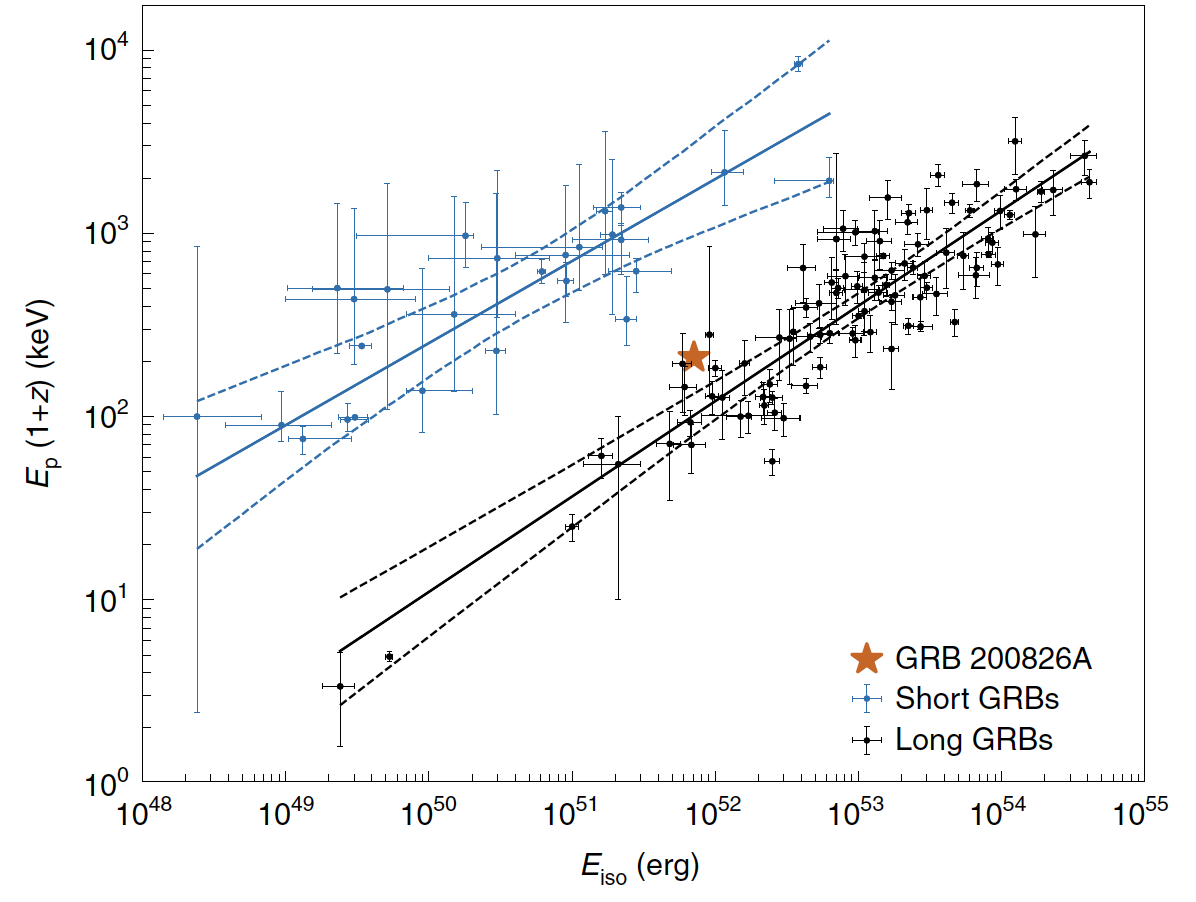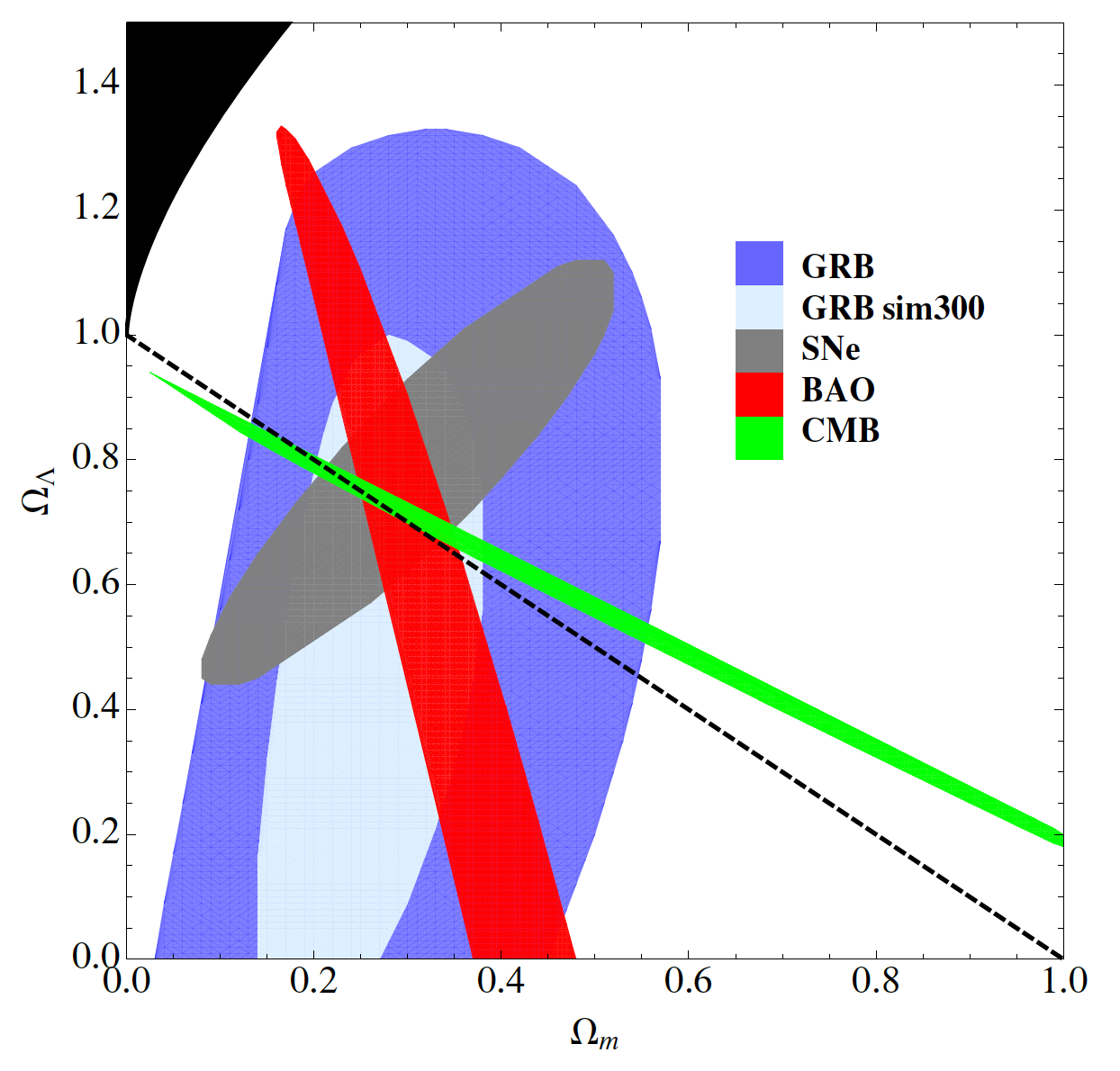· 4 min read
Gamma-Ray Bursts (GRBs)
GRBs are the most energetic explosions in the Universe. Based on previous observations, the distribution of GRBs’ location is isotropic, see Fig. 1, and the range of GRBs’ redshift is wide (up to ), which imply GRBs come from extragalacies.

Classification
According to observed bimodal distribution of duration ( ), GRBs are traditionally divided into short GRBs (SGRBs) and long GRBs (LGRBs) classes, see Fig. 2, that are believed to result from two different types of progenitor stars. Thanks to multi-wavelength, multi-messenger observations and great theoretical efforts in recent years, in general, SGRBs originate from binary neutron star mergers, whereas LGRBs originate from massive star core collapse events.

However, significant overlap is present in the duration comparison of SGRBs and LGRBs, complicating a clear distinction between the two classes of GRBs. Actually, there are lots of other classification methods, which use hardness ratio, time lag and parameter… etc, also encounter overlapping issue. To further advance our understanding of GRBs’ classification by their real mechanisms of progenitor, more GRB monitors, like GTM, can increase the number of GRBs’ databases, which are pretty helpful.
Cosmology
For GRBs with measured redshifts by GRBs’ afterglows, strong correlations between the peak energy ( ) and other quantities, such as the isotropic energy release ( , Amati relation (Ref: Amati, L., et al. 2002, A&A, 390, 81),see Fig. 3), the beaming-corrected energy release ( , Ghirlanda relation (Ref: Ghirlanda, G., et al. 2004, ApJ, 616, 331)) and the peak luminosity ( , Yonetoku relation)…etc, were discovered.

Using above relationships, GRBs can be regarded as a kind of standard candle to measure the distance, where supernova type Ia can’t probe (when ). This means that GRBs can be used to probe the high-z (early) Universe, which can investigate the re-ionization era, population III stars, the metallicity of the circumburst medium, star formation rate and the evolution of cosmological parameters, see Fig. 4.

The large redshifts make it possible to exploit these correlations for constraining cosmological parameters. Therefore, again, more GRB monitors, like GTM, can provide larger sky coverage and better location capability, so that more GRBs’ afterglows, host galaxies and redshifts can be found, which are very much desired.